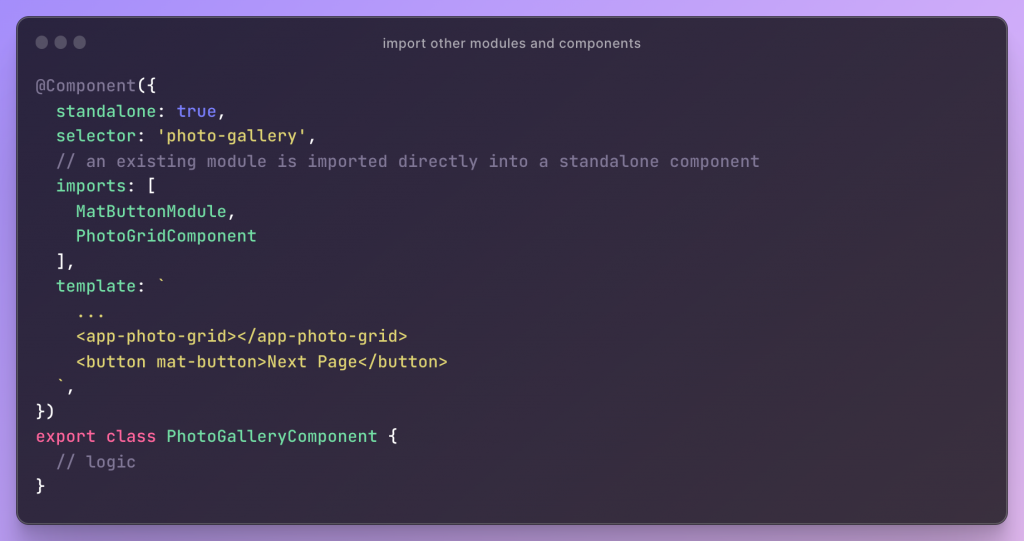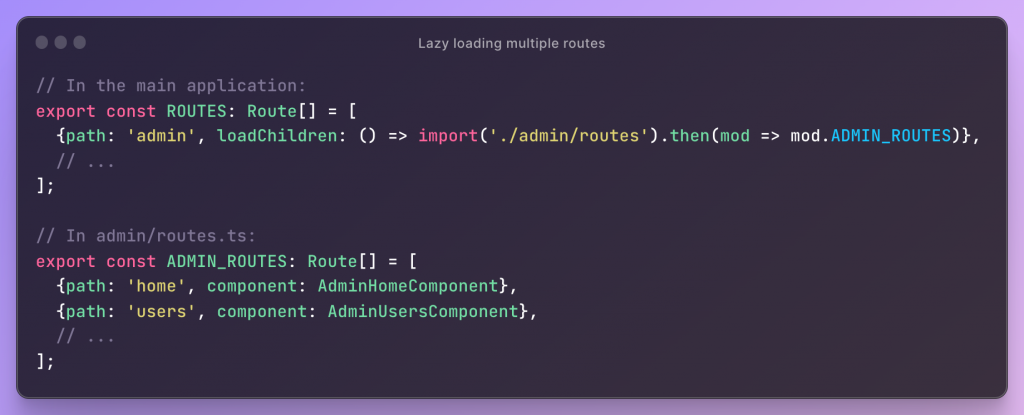Unleashing the Power of Standalone Components in Angular
A standalone component in Angular is a new way to define and organize components in Angular applications. It breaks away from the traditional approach of using NgModules and offers several advantages in terms of simplicity, maintainability, and performance.
What is a standalone component?
- An independent, self-contained unit of code that encapsulates logic, data, and UI elements.
- Unlike traditional components, it does not belong to any specific NgModule.
- It can be directly imported and used in any part of your application.
How to Create a standalone component

This is how it will look like after Running above command

Use Existing NgModules and Components in stand-alone component
When creating a standalone component, you may want to incorporate other components, directives, or pipes into its template. There’s a chance that some of those dependencies won’t be identified as standalone, but rather declared and exported by an already existing NgModule. In this instance, the NgModule can be imported directly into the standalone component.

Routing and Lazy Loading
Any route can lazily load its routed, standalone component by using loadComponent.
As long as the loaded component is standalone, this will work.

Lazy loading of many routes at once
A new set of child Routes can now be loaded using the loadChildren operation without requiring a lazy-loaded NgModule.

Standalone components can be utilized in common scenarios, as mentioned above.
Below are some differences between Standalone components and Traditional Components
- Dependency management
- Standalone components declare their dependencies, leading to more control and potentially smaller bundle sizes.
- Traditional components rely on NgModules, which can lead to implicit dependencies and larger bundle sizes.
- Code structure
- Standalone components simplify the project structure by eliminating the need for NgModules.
- This makes the code easier to understand and maintain.
- Testing and debugging
- Standalone components are isolated units, making them easier to test and debug in isolation.
- Traditional components can be more challenging to test due to potential interactions with other components in the same NgModule.
- Enhanced build performance: Faster compilation times, especially for large projects.
- Future-proofing your application: Aligns your code with the evolving architecture of Angular.
Conclusion:
Despite being relatively new, standalone components have already become a valuable addition to the Angular toolbox. Choosing them to build modern and performant web applications is a compelling choice as their benefits outweigh the initial challenges. With the ecosystem maturing and developers embracing this revolutionary feature, we can expect even more exciting advancements in the future of Angular development.
References:
https://angular.io/guide/standalone-components



